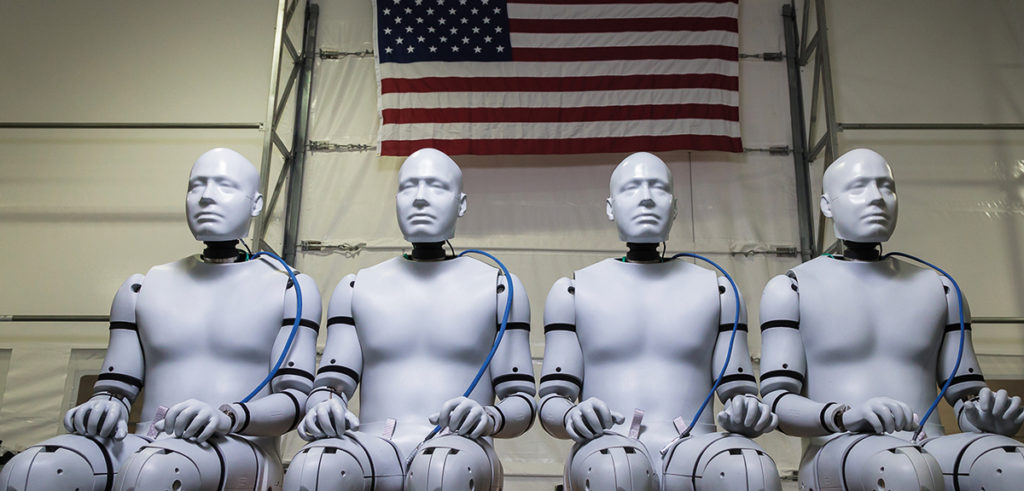The vertical load Warrior Injury Assessment Manikin (WIAMan) is gaining renewed global attention. The US Army has awarded a production contract to Diversified Technical Systems (DTS) to build more ATDs, which may include future orders from companies beyond the US military.
Automotive and military vehicle OEMs, research institutes and aerospace corporations are also now exploring ways to capture vertical load data. This includes underbody blast, ejection seat and other applications where occupants are at risk of injury in vertical load environments.
Earlier this year WIAMan was recruited by NASA for the Fokker F28 full-scale crash landing at NASA’s Langley Research Center. WIAMan was belted in along with 23 other test dummies to collect impact data on the crash landing, which was designed to be severe but survivable.
WIAMan’s unparalleled vertical load biofidelity is also gaining the attention of auto makers for new crash test requirements. As autonomous vehicles hit the streets, so do new safety concerns. WIAMan is being considered for OOP (out of position) testing, as drivers and passengers potentially sit slouched, reclined and even asleep, while their vehicle drives them to their destination.
OEMs, research institutes and aerospace companies, including NASA, are looking at the WIAMan vertical load ATD for injury biomechanics, ejection seat and OOP safety testing.


